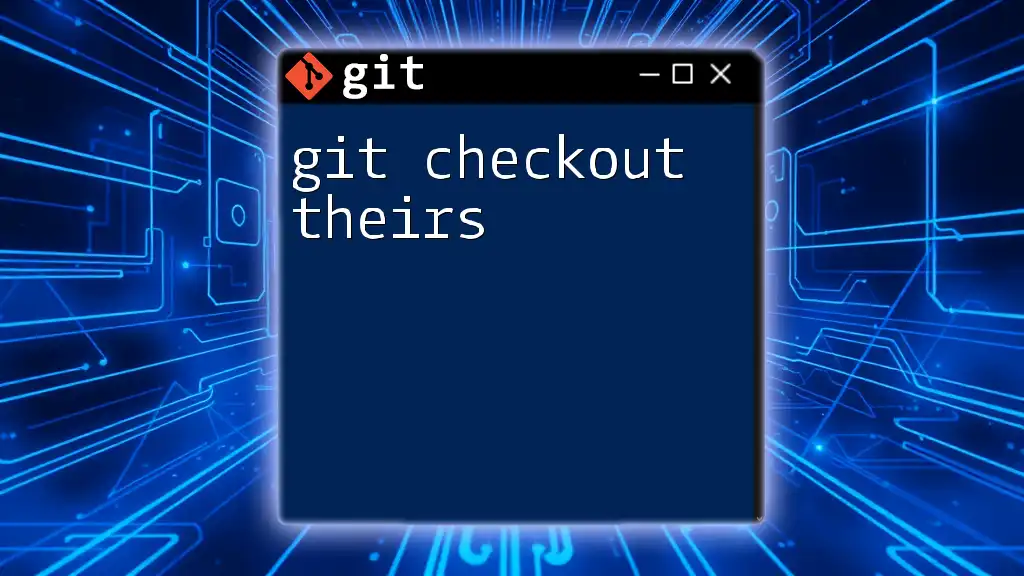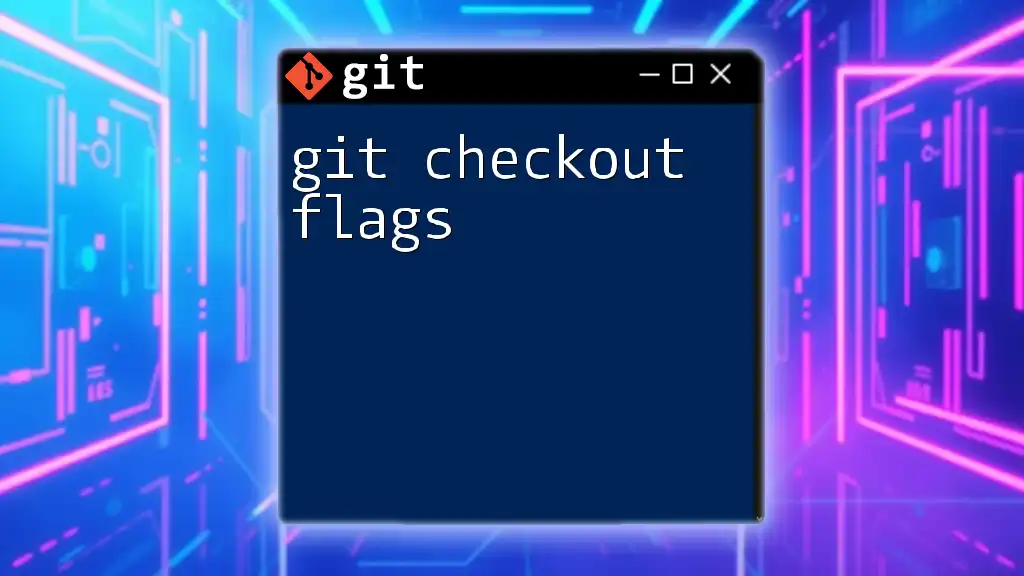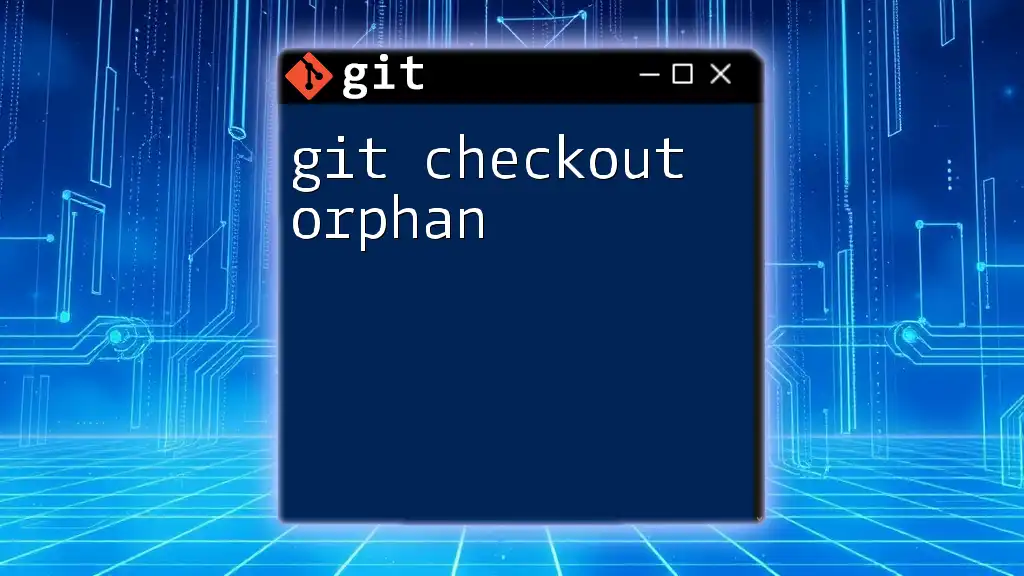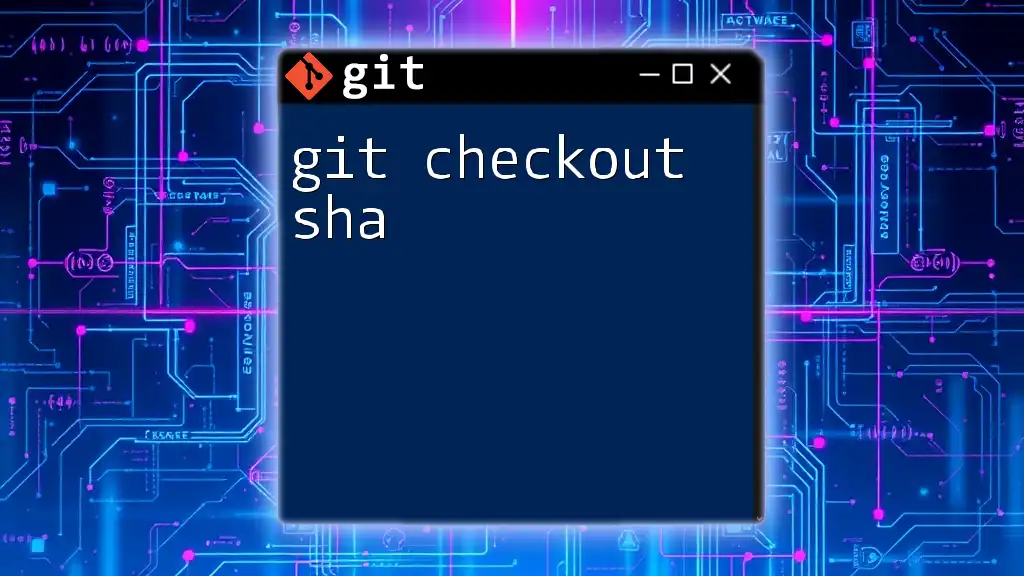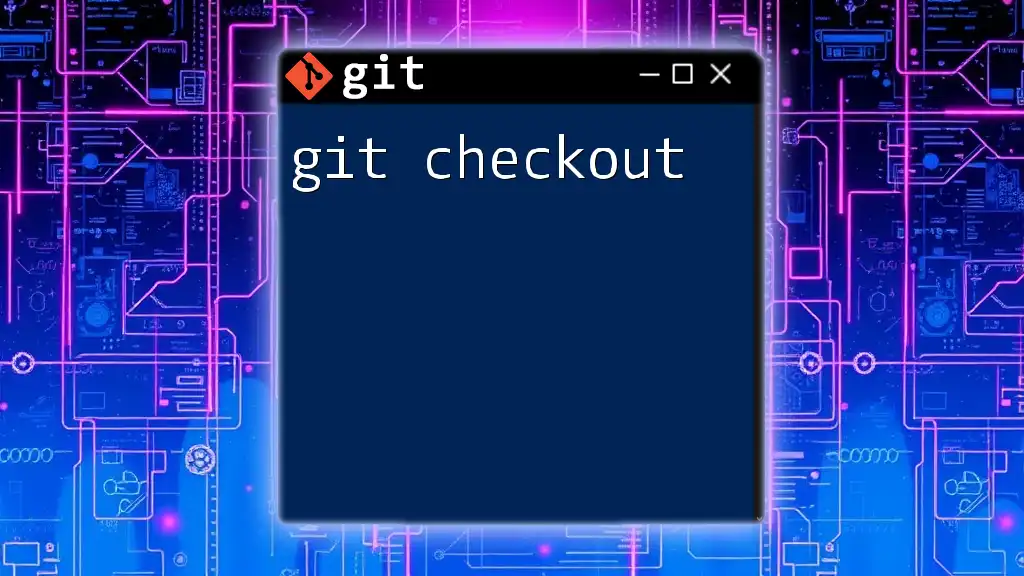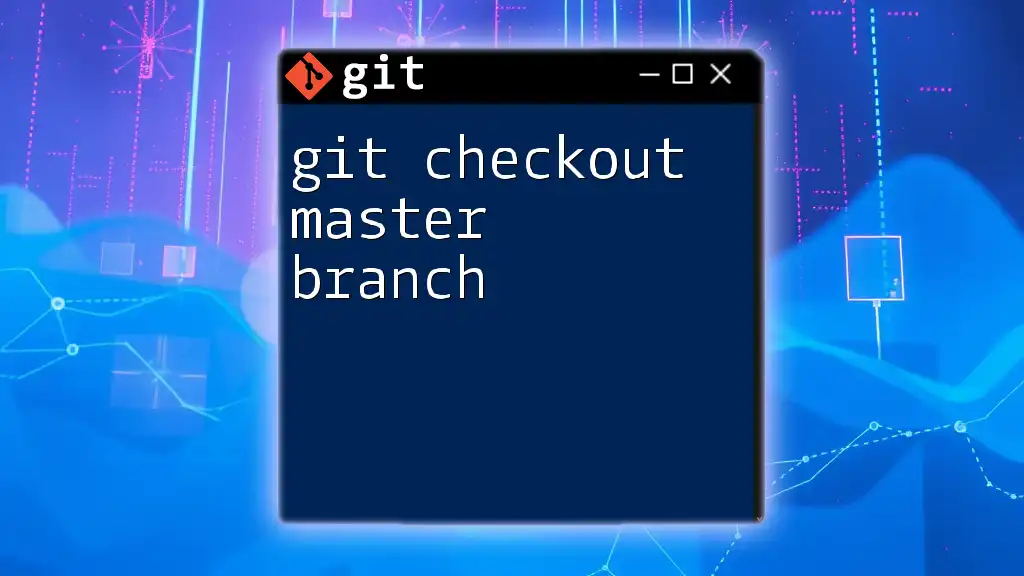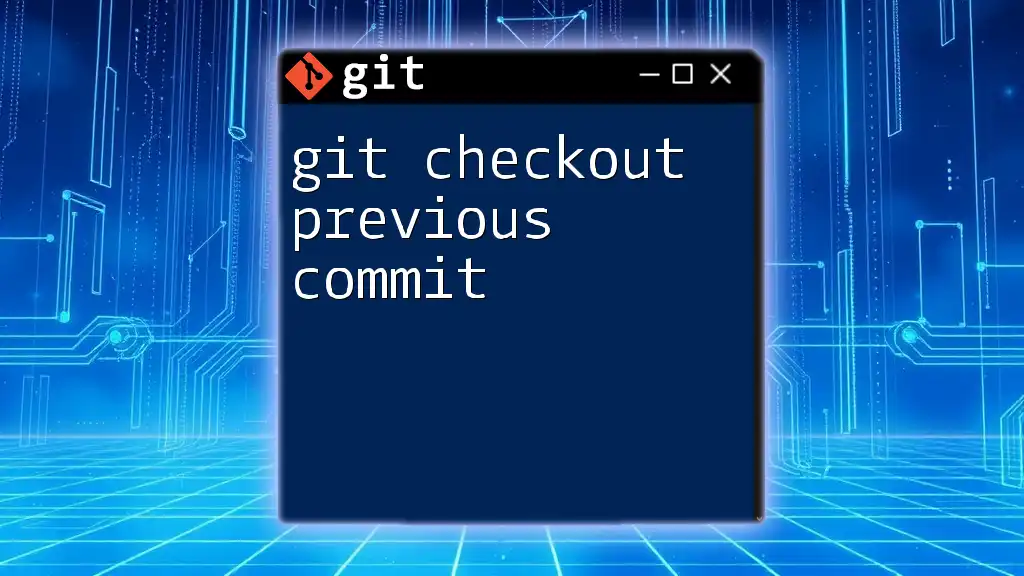The `git checkout --theirs` command is used during a merge conflict to resolve the conflict by accepting the changes from the branch being merged into your current branch.
git checkout --theirs <file>
What is `git checkout --theirs`?
The command `git checkout --theirs` refers to a specific usage of the `git checkout` command that allows you to resolve merge conflicts by favoring the changes from the branch being merged into your current branch. When you encounter a merge conflict, Git will not automatically add files that have competing changes from both branches. The `--theirs` option essentially tells Git that when you resolve the conflict in the specified files or directory, you want to keep the changes from the branch you are merging in.
The use of `--theirs` is particularly advantageous when you trust the incoming branch’s changes to be the correct or desired updates, or when you are collaborating with a team, and you need a quick way to adopt those changes while discarding your own.
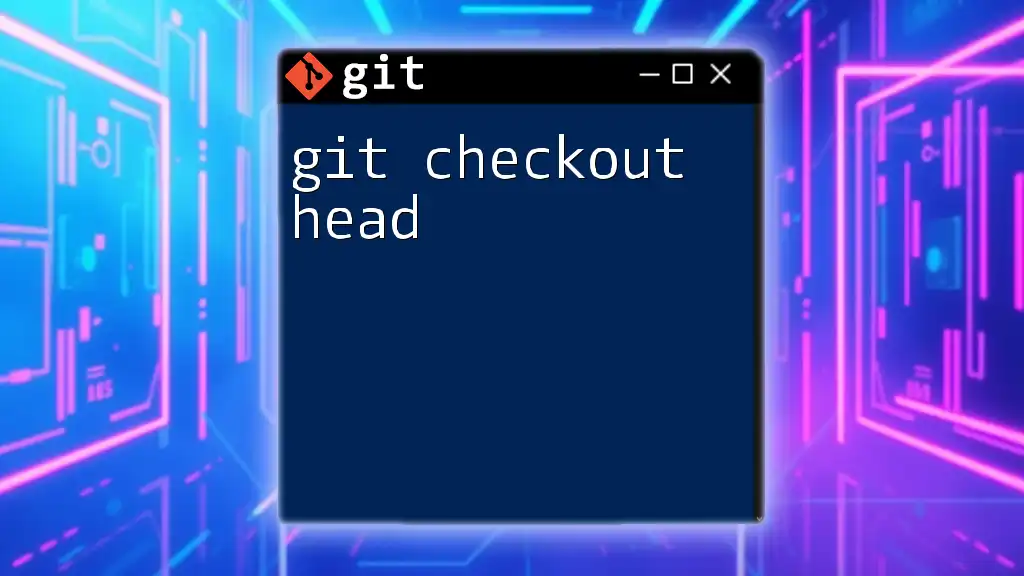
Understanding Merge Conflicts
What are Merge Conflicts?
Merge conflicts occur when Git can't automatically resolve differences between two branches. This happens when two or more people make changes to the same lines of a file or when one person modifies a file while another deletes it. When you try to merge branches with such conflicting changes, Git will flag these issues and require manual intervention.
Why Use `git checkout --theirs`?
Using `git checkout --theirs` can significantly streamline the conflict resolution process during merges. You might choose to use `--theirs` in several scenarios, such as:
- Collaborating on the Same Files: When multiple contributors are working on overlapping parts of the codebase, using `--theirs` allows you to quickly adopt a teammate's changes.
- During a Merge Conflict: When merging branches results in conflicts, `--theirs` allows you to prefer the incoming changes without meticulously editing every conflicting file.
Benefits of using `--theirs`: This command enables speed and efficiency in resolving conflicts, making it a valuable tool in collaborative environments.

How to Use `git checkout --theirs`
Basic Syntax
The basic syntax for the `git checkout --theirs` command is as follows:
git checkout --theirs <path/to/file>
This command can be executed during a merge conflict to specify which version of a file you would like to keep — that of the branch being merged in.
Step-by-Step Example
-
Setting Up a Repository
To illustrate the use of `git checkout --theirs`, let's set up a simple example repository. This will demonstrate the command in action through a series of steps.
git init example-repo cd example-repo echo "Hello World" > example.txt git add example.txt git commit -m "Initial commit" -
Creating a Branch & Adding Changes
Next, we will create a new branch and modify `example.txt`.
git checkout -b feature-branch echo "Feature changes" >> example.txt git add example.txt git commit -m "Added feature changes" -
Simulating a Merge Conflict
Now, switch back to the main branch (`main`) and make a change to the same file to create a conflict.
git checkout main echo "Main branch changes" >> example.txt git add example.txt git commit -m "Modified example.txt on main branch" -
Merging and Encountering a Conflict
Now, let’s attempt to merge the `feature-branch` into `main`.
git merge feature-branchAt this point, Git will notify you of a merge conflict in `example.txt` due to the competing changes between the branches.
Resolving the Conflict with `--theirs`
To resolve the conflict in favor of the incoming branch, use the `--theirs` option to check out the version from the `feature-branch`.
git checkout --theirs example.txt
After executing this command, Git will replace the conflicted file `example.txt` with the version from the `feature-branch`.
- Final Steps
The final steps involve adding the resolved file back to the staging area and completing the merge.
git add example.txt
git commit -m "Resolved conflicts using 'theirs'"
This allows you to finish the merge process quickly and efficiently, adopting the desired changes.
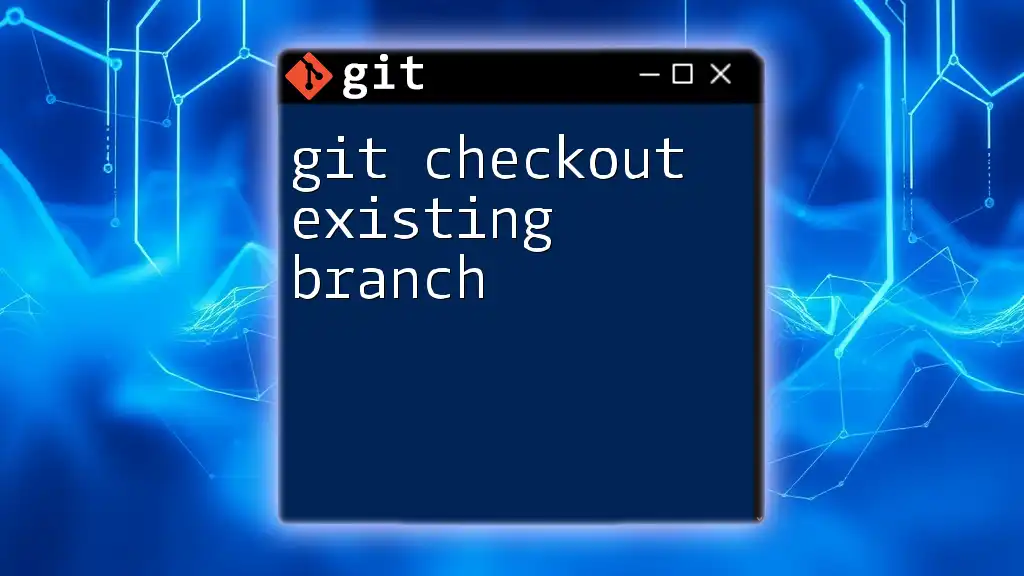
Best Practices for Using `git checkout --theirs`
When to Use `--theirs` and When to Avoid It
While `git checkout --theirs` can be a powerful tool, it's not always the correct choice. You should use `--theirs` when you are confident that the changes from the incoming branch are correct. However, there are situations where it might be wise to review the changes manually before making a decision, particularly if:
- The changes are critical to the functionality of the code.
- You are not fully aware of the context behind the changes made in the incoming branch.
Additional Tools for Conflict Resolution
Besides `git checkout --theirs`, various tools and commands can assist in resolving conflicts. Some options include:
- `git diff`: To review differences between branches or commits.
- `git mergetool`: To utilize an external merge tool for resolving conflicts visually.
- GUI applications like Sourcetree or GitKraken: These can simplify the conflict resolution process, providing a user-friendly interface to compare changes side by side.
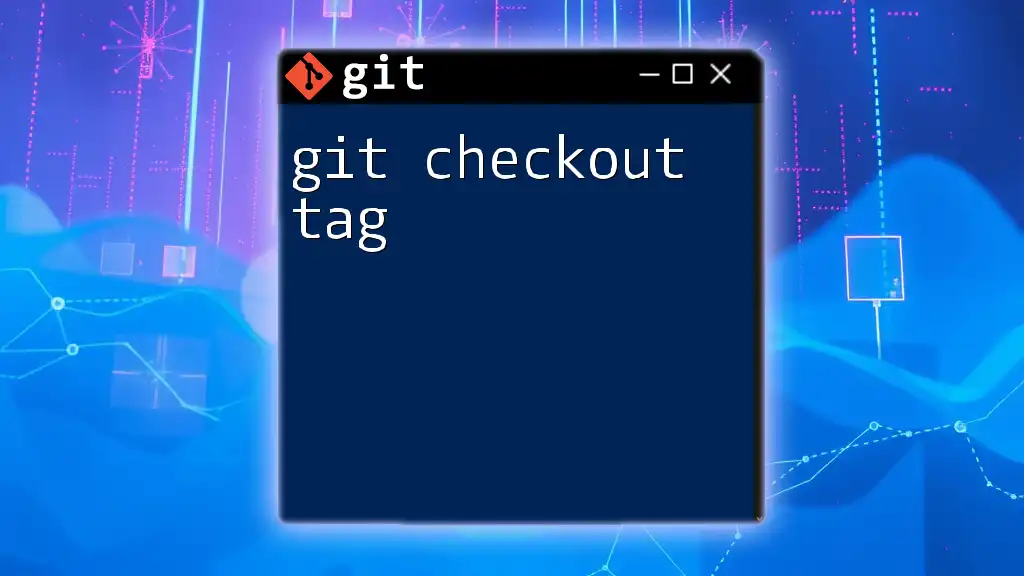
Conclusion
The `git checkout --theirs` command is an essential tool for swift conflict resolution in collaborative projects. By favoring the incoming changes during a merge conflict, it allows developers to streamline the merging process, enabling efficient collaboration. However, it is crucial to understand when to use this command wisely and consider using complementary tools to ensure that the integrity of your codebase is maintained.

Resources for Learning More About Git
If you’re eager to deepen your understanding of Git, there are plenty of resources available:
- Books: "Pro Git" by Scott Chacon and Ben Straub is a widely respected introduction and comprehensive guide.
- Online Courses: Platforms like Coursera, Udemy, and edX offer various courses tailored to all skill levels.
- Documentation: The official Git documentation is an invaluable resource for mastering specific commands and functions.
- Community Forums: Engaging with communities on platforms like Stack Overflow can provide real-time support and insights as you learn.
By leveraging these resources, you can further enhance your skills and become proficient in using Git for version control.

